Às vezes somos enganados por nossas
inferências, e quando vemos dados reais, temos uma surpresa. Deixe-me explicar.
Vivien Leigh foi uma atriz esplêndida, uma das melhores de todos os tempos,
não? Então nós somos levados a pensar que seu conjunto da obra foi grande e
memorável, mas na realidade ela fez apenas 18 filmes. Obviamente, foram quase
todos filmes de alta qualidade, mas 18 é um número muito pequeno. Nós
poderíamos fazer um festival, durando uma semana, com todos os filmes dela!
Sometimes we are misguided by our inferences, and
when we see real data, we get surprised. Let me explain. Vivien Leigh was a
wonderful actress, one of the best ever, right? So we think her body of work
was extensive and remarkable, but in reality she only made 18 films. Of course,
these are films from the highest quality, but 18 is a surprisingly short number
anyway. We could fit her whole filmography into an one-week film festival!
O mesmo não pode ser feito com outras
estrelas de cinema. Falemos de Charles Chaplin agora. De acordo com o IMDb, ele
fez 87 filmes – sendo ‘ele mesmo’ em apenas um deles – e dirigiu 71 destes
filmes. Bastante, não? Mas você acreditaria se eu dissesse que ainda há filmes
de Chaplin esperando para serem redescobertos? Ou, pelo menos, havia filmes
esperando para serem redescobertos quando Chaplin faleceu, no dia de Natal de
1977. E o documentário “O Chaplin que Ninguém Viu” foi o responsável por
finalmente levar estes filmes à luz em 1983.
The same can’t be done with other film stars. Take
Charles Chaplin now. According to IMDb, he appeared in 87 films - only one
being a cameo - and directed 71 of these films. Quite a lot, right? But would
you believe if I told you that there are still Chaplin movies waiting to be
discovered? Or at least, there were films waiting to be discovered when he
died, on Christmas Day, 1977. And the documentary “Unknown Chaplin” was
responsible for finally shining a light on these works in 1983.
Narrado pelo inconfundível James
Mason, o documentário é dividido em três episódios, e eles foram originalmente
exibidos na Inglaterra em janeiro de 1983. Somados, os episódios perfazem 153
minutos, mais de duas horas e meia, de material quase 100% inédito. Estes
fragmentos seriam como “cadernos de esboços de um grande artista”, como define
Mason. Então, vamos ver que tesouros o documentário nos traz.
Narrated by the unmistakable James Mason, the
documentary has three episodes, and they were originally broadcast in England
in January 1983. They make up 153 minutes, more than two and a half hours, of
almost 100% unseen Chaplin material. These little bits of film would be like
“sketchbooks from a great artist”, as Mason says. So, let’s see the treasures
this documentary had for us.
Part 1 - My Happiest Years
Nesta primeira parte, vemos filmagens
de teste dos filmes de Chaplin na Mutual Company, feitos entre 1916 e 1917.
Chaplin fez 12 curtas-metragens em 16 meses e mais tarde chamou este período na
Mutual de “seus anos mais felizes”.
In this first part, we see rushes of Chaplin’s
films by Mutual Company, made between 1916 and 1917. Chaplin did 12 two-reelers
in 16 months, and later recalled his time at Mutual as “his happiest years”.
Aos ver estes testes descobrimos que
Chaplin improvisava com frequência, ensaiava com as câmeras rodando e ajustava o
ritmo com cada tomada – e às vezes ele demorava centenas de tomadas para
conseguir a velocidade e o ritmo perfeitos. E, ao contrário de Mack Sennett,
ele sempre queria ter uma explicação lógica para o pandemônio na tela.
By watching the rushes we find out that Chaplin
improvised a lot, rehearsed while the cameras were rolling and adjusted the
pace with each take – and sometimes he took hundreds of takes to find out just
the perfect timing. In this phase Chaplin relies a lot on props to make the
public laugh. And, unlike Mack Sennett, he always wanted to have a logical
explanation for his pandemonium.
Algumas cenas foram descartadas, a
exemplo de uma muito perigosa, envolvendo um machado e uma tomada reversa em “Carlitos
no Estúdio” (1916), e também a primeira e última cena em que o personagem
Carlitos usa óculos.
Some scenes were discarded, like a very dangerous
one involving an axe and a reverse shot in “Behind the Screen” (1916), and also
the first and only time the Tramp character wore glasses.
Nós também ficamos por dentro do incrível
processo criativo por trás de “O Imigrante” (1917), provavelmente o melhor
curta-metragem de Chaplin. Foi um filme criado conforme era filmado, com
mudanças constantes na história e truques de câmera sagazes.
We also get to know the amazing creative process
behind “The Immigrant” (1917), probably Chaplin’s best short film. It was a
movie created in the moment, with constant changes in the plot and wise camera
tricks.
Desde esta primeira fase, vemos que
Chaplin preferia trabalhar com pessoas que não tinham experiência com atuação,
o que tornava suas performances mais espontâneas e verdadeiras.
Since this first phase, we can see Chaplin’s
preference to work with people who didn’t have an acting background, something
that made their performances seem more spontaneous and natural.
Part 2 - The Great Director
Como o narrador menciona, seus filmes
da Mutual tinham de contar suas próprias histórias, pois não havia colaboradores
sobreviventes do período para contá-las. Da fase seguinte, que começa com um
contrato de distribuição assinado com a First National em 1918, entretanto,
ainda havia testemunhas oculares vivas em 1983. Nós vemos entrevistas com
amigos, assistentes e, claro, com as estrelas Jackie Coogan, Lita Grey e
Georgia Hale.
As the narrator mentions, his Mutual films and rushes
had to tell their own backstage stories, since there were no surviving
collaborators from this phase. From the following phase, starting with a First
National distribution contract signed in 1918, however, there were living
eyewitnesses in 1983. We see interviews with friends, assistants and, of
course, with the stars Jackie Coogan, Lita Grey and Georgia Hale.
 |
| Jackie Coogan |
E tem mais: um registro fascinante de
um cinegrafista amador no set de “Luzes da Cidade” (1931) mostra Chaplin
tentando descobrir como a vendedora de flores cega, interpretada por Virginia
Cherrill, poderia confundir seu personagem Carlitos com um milionário.
And there is more: a fascinating amateur movie from
the set of “City Lights” (1931) shows Chaplin trying to figure out how the
blind flower girl played by Virginia Cherrill would mistake his Tramp character
for a millionaire.
Esta segunda parte foca nos maiores
sucessos de Chaplin: “O Garoto” (1921), “Em Busca do Ouro” (1925) e “Luzes da
Cidade”. Nós também temos a oportunidade única de ver o final de “Luzes da
Cidade” gravado com Georgia Hale no papel principal, e a sensação é de que
estamos verdadeiramente vendo um tesouro da história sétima arte. Eu considero
a performance de Virginia superior, mas ver o que poderia ter sido não tem
preço.
This second part focuses on Chaplin’s biggest
successes: “The Kid” (1921), “The Gold Rush” (1925) and “City Lights”. We also
have the unique chance to see the ending of “City Lights” shot with Georgia
Hale in the girl’s role, and we feel like we truly are in front of a treasure
from film history. I think Virginia’s performance is the best, but seeing what
could have been is priceless.
Part 3 -
Hidden Treasures
Tudo vai bem por enquanto, mas chegou
a hora do verdadeiro espetáculo. O que mais se pode esperar de um episódio que
começa com um filme caseiro de Douglas Fairbanks de 1929 no qual Chaplin
originou a ideia para o balé com o globo terrestre que ele faria 11 anos depois
em “O Grande Ditador”?
Things were nice so far, but they were about to
become amazing. What else can we expect from an episode that starts with a 1929
Douglas Fairbanks home movie in which Chaplin originated the idea for the globe
ballet he would do 11 years later in “The Great Dictator”?
Em meio aos filmes caseiros feitos
por diversão sempre que um visitante ilustre ia até o set, encontramos um
chamado “How to Make Movies”, feito em 1918, quando Chaplin se mudou para
Hollywood, construiu seu próprio estúdio e se tornou um diretor independente.
As cenas deliciosas e muito elaboradas mostram Chaplin ganhando seu estúdio de
um gênio da lâmpada, e os verdadeiros funcionários do estúdio interpretam suas
funções para a câmera – com um toque de humor.
Among home movies, little films made for fun
whenever illustrious visitors came to the set and other rarities, we find a
film called “How to Make Movies”, made for fun in 1918, when Chaplin moved to
Hollywood, built his own studio and became an independent director. The
delightful and elaborate scenes we see show Chaplin earning his studio from a Genie
in the Lamp, and the real studio employees are playing their functions to the
camera – with a humorous twist.
Com Chaplin, as gags poderiam ser
descartadas, mas nunca abandonadas. Elas seriam usadas novamente anos depois,
modificadas e melhoras. Você se lembra da sequência das pulgas circenses em “Luzes
da Ribalta” (1952)? Bem, isso já havia sido tentado antes, em uma sequência
mostrada pela primeira vez no documentário, mais de 60 anos depois de ter sido filmada.
A pequena sequência de “The Professor”, que nunca foi finalizado, pode ser agora
algo que os maiores fãs de Chaplin já conhecem, mas em “O Chaplin Que Ninguém
Viu” as cenas eram inéditas – uma descoberta.
With Chaplin, the gags could be discarded, but
never abandoned. They would be used again years later, modified and improved.
Do you remember the flea circus sequence from “Limelight” (1952)? Well, it had
been tried before, in a segment that was shown for the first time in the
documentary, more than 60 years after it was shot. The little sequence from the
unreleased “The Professor” may now be a familiar one for die-hard Chaplin fans,
but in “Unknown Chaplin” it was something brand new – a discovery.
“O Chaplin que Ninguém Viu” é uma
delícia para qualquer fã de Chaplin – que, aliás, tinha a claquete marcada com “Chas
Chaplin” na época da Mutual. Aqueles que já viram mais filmes de sua obra serão
os que tirarão mais proveito do documentário e, como eu, podem inclusive mudar
de opinião sobre uma ou outra coisa ao desligar a TV.
“Unknown Chaplin” is a delight for any Chaplin fan –
who, by the way, had his clapperboards marked with “Chas Chaplin” in his Mutual
years. The ones who have already watched many Chaplin films will be the ones
who will enjoy the documentary the most, and, like me, they may even have some
opinions changed when they turn off the TV.
This is my contribution to the Charlie Chaplin
blogathon, hosted by Little Bits of Classics and Christina Wehner.
“All images from
Chaplin films made from 1918 onwards, Copyright © Roy Export S.A.S. Charles
Chaplin and the Little Tramp are trademarks and/or service marks of Bubbles
Inc. S.A. and/or Roy Export”


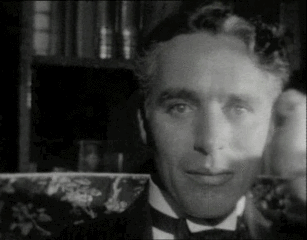



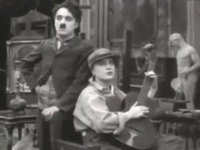
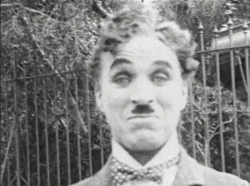

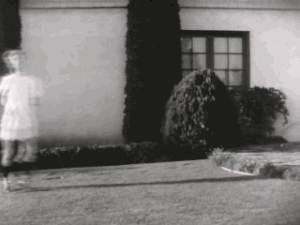
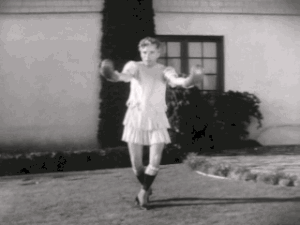


6 comments:
What a delightful journey of discovery! How wonderful that these clips were compiled giving us so much to learn.
Wow - it sounds like a treasure trove! And invaluable at getting a look at his creative process. Everything always looks so easy when you see him on screen in his films, that it's wonderful to see what goes into the creation of such apparent ease.
Thank you so much for joining and sharing the Unknown Chaplin!
What a lovely post! Unknown Chaplin is so insightful and reveals so much of the sorcerer's magic tricks. I'm glad you saw it!
Beautiful post. This series literally changed my life. I watched it on a whim when first shown on TV (many years ago!) and I have been obsessed with Charlie ever since. I think I know every word of every episode by heart!
This sounds like an amazing series! I must see it!
Thanks for sharing some of the info from the series. The gif you posted of Chaplin performing the "ballet" is delightful.
Thanks so much for a fantastic article. I am looking forward to seeing the series. Having just written about City Lights I was also amazed that the final scene was actually filmed with Georgia Hale! How amazing!
I agree with you that The Immigrant is perhaps his best short and I do recall seeing in a series on Chaplin years ago, the amount of work that went into its' production.
Will start following your blog and look forward to reading more! Best regards, Paul.
Post a Comment